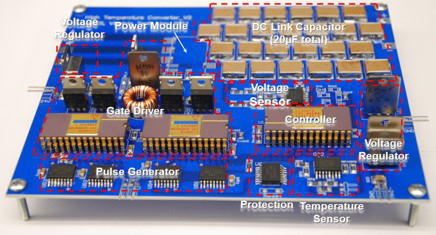LIBRARY
A High-Temperature SiC Three-Phase Converter Design for >100 °C Ambient Temperature

Taking into consideration the material available, SiC diodes and JFETs are used as the main circuit devices and are packaged in a novel HT planar structure. Besides the HT SiC power module, an HT transformer-isolated gate drive circuit is also proposed. Other functions; such as the harmonic filter and the control system, including protection and sensor functions; are designed according to the available HT silicon-on-insulator (SOI) ICs and HT passive components. Be-cause of both the simple topology and the simple control, a typical single-switch three-phase boost PFC circuit is used to demonstrate the concept of HT converter design. The structure and topology for the three-phase ac/dc rectifier are shown in Fig. 1. The power module is composed of seven SiC diodes and one normally ON SiC JFET. The first six diodes are utilized as a diode rectifier stage, and another diode and JFET make up the second boost stage. The input voltage is lower than 100V (rms/phase), and the output voltage is regulated to 270V. The system's power rating is 1.4kW.























































































